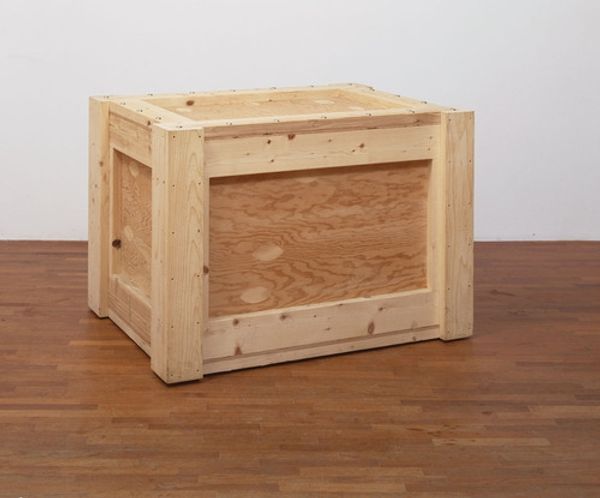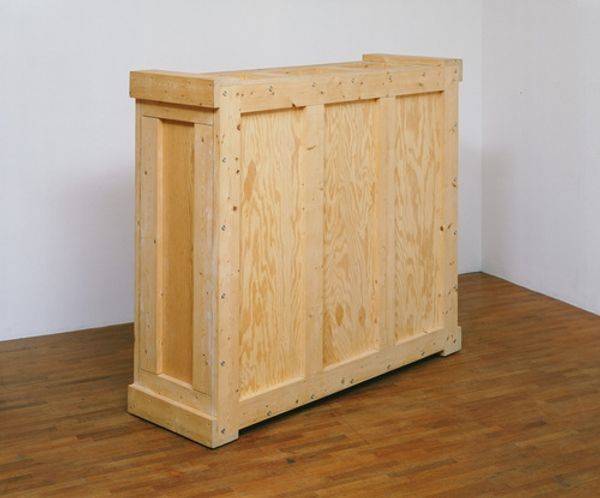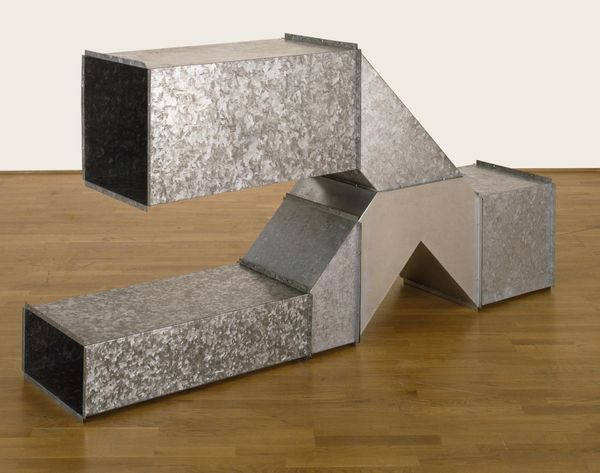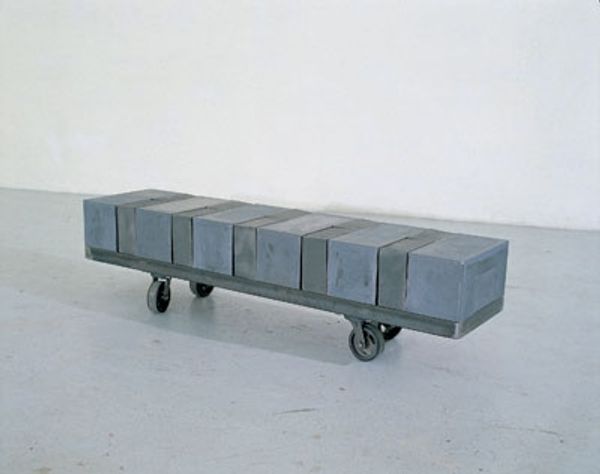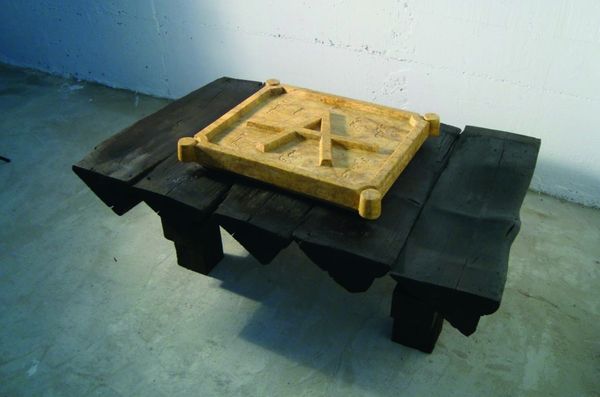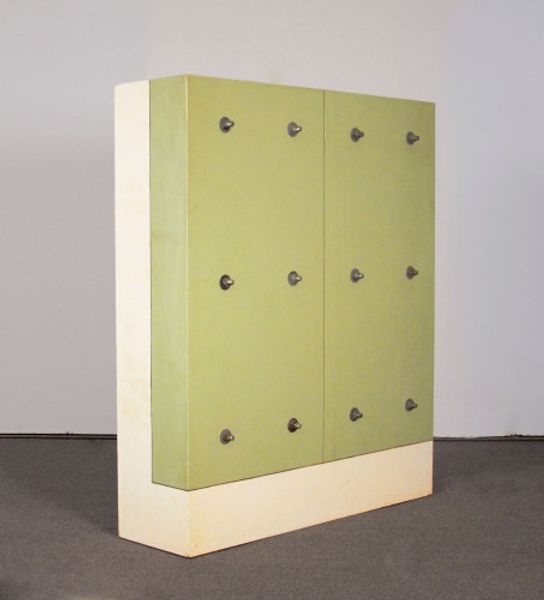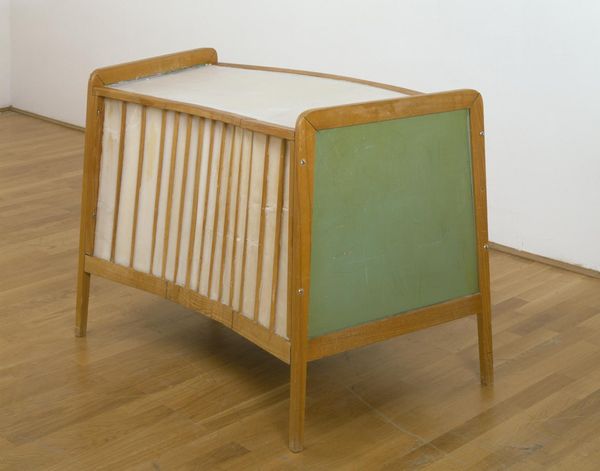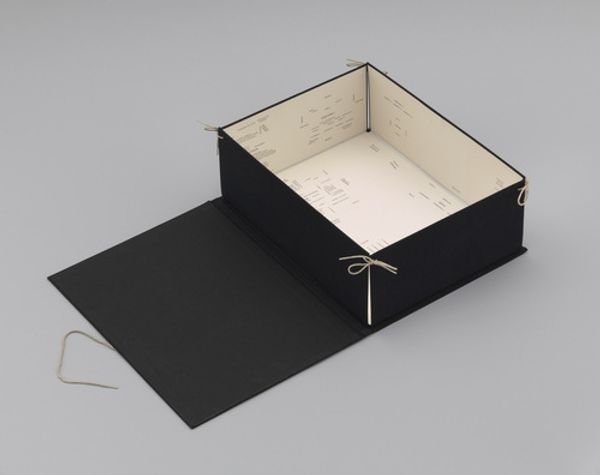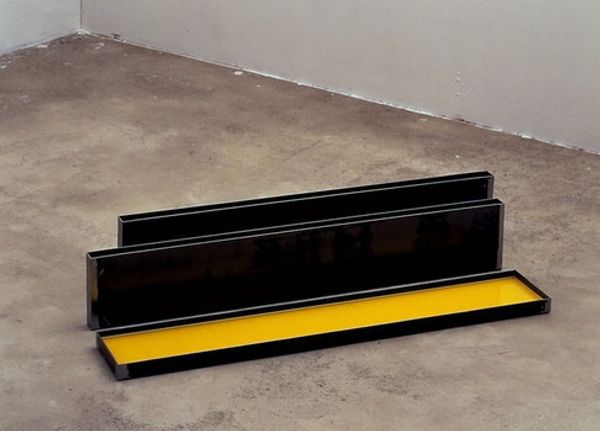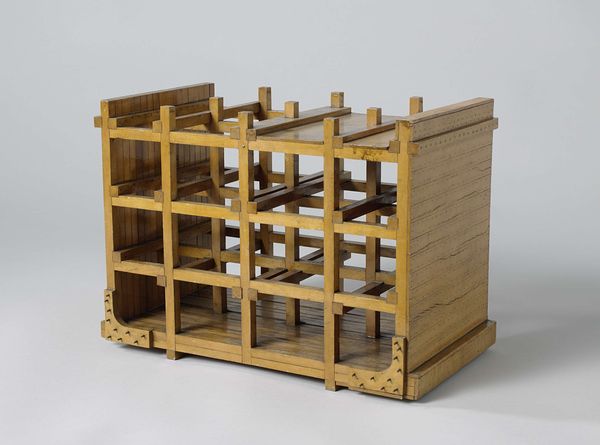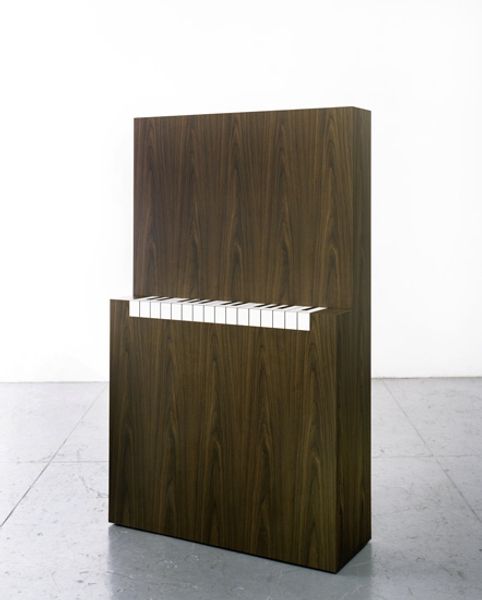
mixed-media, sculpture, wood
#
abstract-expressionism
#
mixed-media
#
geometric composition
#
architecture mock-up
#
form
#
geometric
#
sculpture
#
matter-painting
#
wood
Copyright: Gary Kuehn,Fair Use
Curator: At first glance, I feel like I’m staring at an oddly compelling minimalist hay bale. It’s just… surprising. Editor: It is, isn't it? The piece is Gary Kuehn's "Straw Piece" from 1963. It’s made from wood and straw, combining both structure and… well, actual straw. This early work gives such insight to his shift away from the more rigid conventions associated with Abstract Expressionism to these freer experimentations with materials and geometric form. Curator: Free is definitely one word for it! The green frame, the compressed straw… it feels almost like an architectural study, but simultaneously fragile and absurd. Is it mocking our obsession with clean lines versus natural forms? Editor: That contrast is really central to how Kuehn's sculptures generate meaning. The tension between organic and geometric creates this really intriguing dissonance. The straw becomes a stand-in for chaos contained, perhaps a critique of imposing order without true understanding. Consider that hay or straw is this long standing, almost universal, symbol of sustenance. In colder months, communities depended on stocks of straw for food. To reduce that icon to a study is to examine humanity’s need to impose its will upon nature, to harness resources, to confine them. Curator: It certainly does! The very visible hardware practically screaming the method. All of it really reminds me how we package and present nature, the straw neatly "preserved" inside the constraints of its frame like something collected for future use. There's almost a coldness there, this planned usage against the very real comfort it otherwise evokes for me as you explain that need for it. Is it supposed to be a question? Does this object demand that sort of observation, I wonder? Editor: It resonates with these long-held iconographies because these are always a dialogue; that relationship between past symbol, new context, and our own contemporary gaze really enriches this kind of exploration. Its impact lingers because it's unfinished business; an observation meant to challenge us long past its genesis. Curator: You know, reflecting on this sculpture now I sense there’s an element of a private joke baked in. Maybe only Kuehn himself truly understood, maybe that's part of the appeal – the unanswered questions it poses make it endlessly thought-provoking. Editor: Exactly, and perhaps, just perhaps, that’s what allows us to have found this intriguing interplay of history, art, and the way they reflect each other back to us, after all this time.
Comments
No comments
Be the first to comment and join the conversation on the ultimate creative platform.
